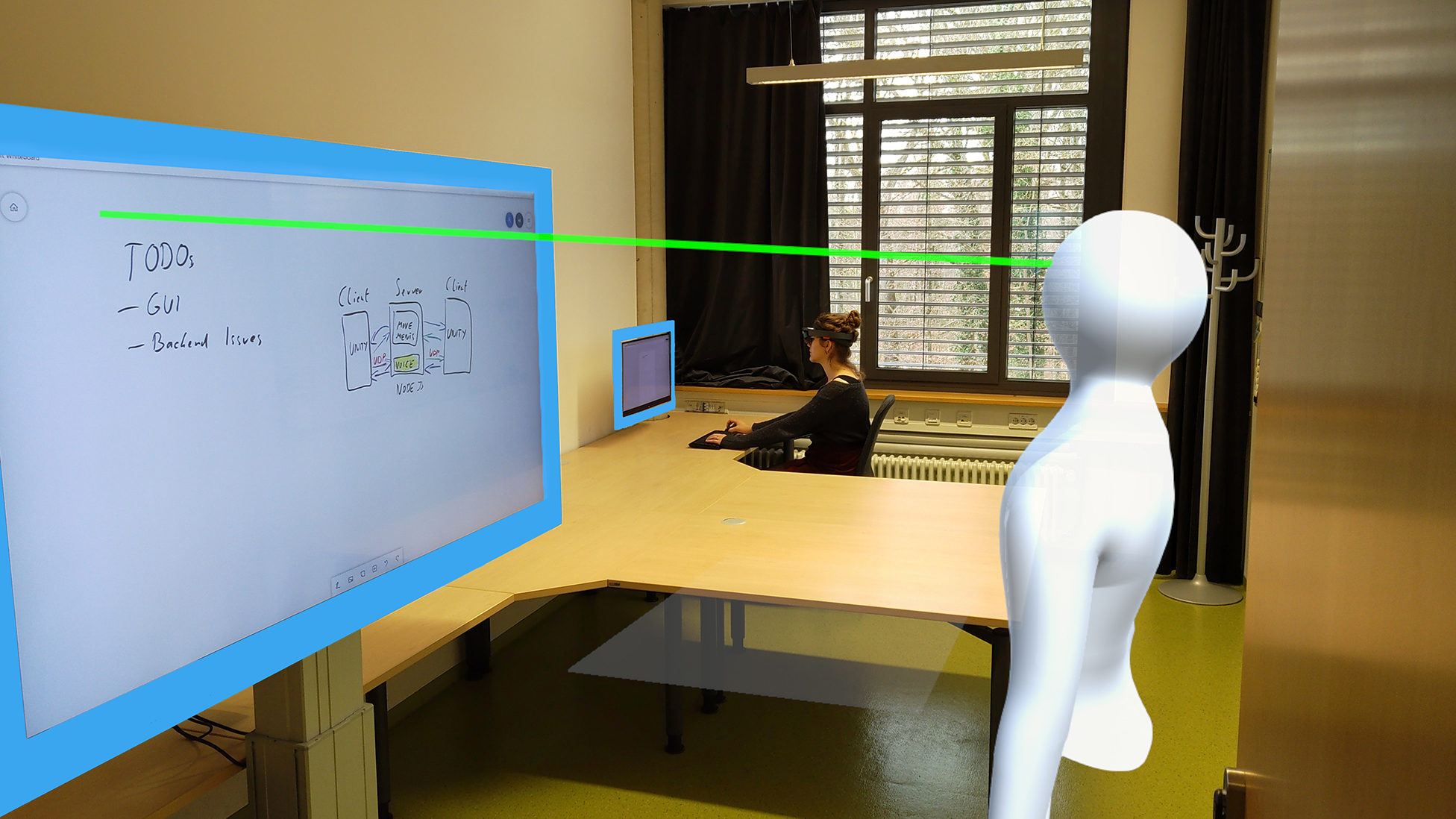Prof. Dr. Harald Reiterer
Room PZ 910
Meetings by prior arrangement.

We are happy to announce that we presented our Re-locations paper at this year's Interactive Surfaces and Spaces Conference (ISS 2022) in Wellington:
Daniel Immanuel Fink¹, Johannes Zagermann¹, Harald Reiterer¹, Hans-Christian Jetter²
¹ University of Konstanz ² University of Lübeck
The presentation video of the talk is available here.
Augmented reality (AR) can create the illusion of being virtually co-located during remote collaboration, e.g., by visualizing remote co-workers as avatars. However, spatial awareness of each other's activities is limited as physical spaces, including the position of physical devices, are often incongruent. Therefore, alignment methods are needed to support activities on physical devices. In this paper, we present the concept of Re-locations, a method for enabling remote collaboration with augmented reality in incongruent spaces. The idea of the concept is to enrich remote collaboration activities on multiple physical devices with attributes of co-located collaboration such as spatial awareness and spatial referencing by locally relocating remote user representations to user-defined workspaces. We evaluated the Re-locations concept in an explorative user study with dyads using an authentic, collaborative task. Our findings indicate that Re-locations introduce attributes of co-located collaboration like spatial awareness and social presence. Based on our findings, we provide implications for future research and design of remote collaboration systems using AR.